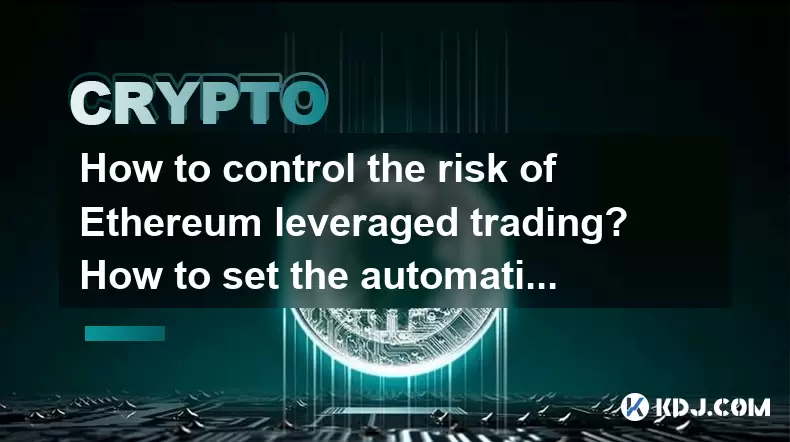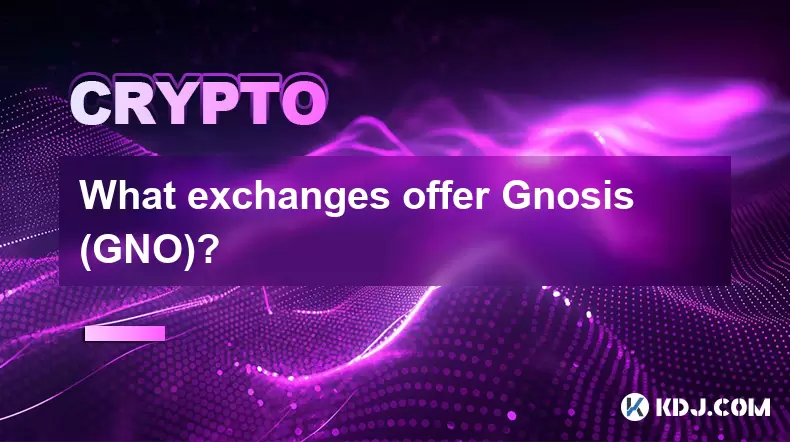-
 Bitcoin
Bitcoin $119000
-2.21% -
 Ethereum
Ethereum $4315
1.01% -
 XRP
XRP $3.151
-3.11% -
 Tether USDt
Tether USDt $0.0000
0.00% -
 BNB
BNB $808.5
-0.71% -
 Solana
Solana $175.8
-4.21% -
 USDC
USDC $0.9999
0.00% -
 Dogecoin
Dogecoin $0.2250
-3.92% -
 TRON
TRON $0.3469
1.77% -
 Cardano
Cardano $0.7818
-3.81% -
 Chainlink
Chainlink $21.47
-2.10% -
 Hyperliquid
Hyperliquid $43.30
-6.81% -
 Stellar
Stellar $0.4370
-2.84% -
 Sui
Sui $3.682
-4.40% -
 Bitcoin Cash
Bitcoin Cash $590.8
2.67% -
 Hedera
Hedera $0.2484
-5.20% -
 Ethena USDe
Ethena USDe $1.001
0.00% -
 Avalanche
Avalanche $23.10
-4.29% -
 Litecoin
Litecoin $119.2
-3.96% -
 Toncoin
Toncoin $3.409
0.90% -
 UNUS SED LEO
UNUS SED LEO $9.016
-1.29% -
 Shiba Inu
Shiba Inu $0.00001304
-3.82% -
 Uniswap
Uniswap $11.18
1.33% -
 Polkadot
Polkadot $3.913
-3.51% -
 Cronos
Cronos $0.1672
-3.08% -
 Dai
Dai $1.000
0.02% -
 Ethena
Ethena $0.7899
-4.70% -
 Bitget Token
Bitget Token $4.400
-1.23% -
 Pepe
Pepe $0.00001132
-5.93% -
 Monero
Monero $257.9
-6.44%
How to control the risk of Ethereum leveraged trading? How to set the automatic liquidation ratio?
Leveraged trading on Ethereum requires careful risk management; use position sizing, stop-loss orders, and set an automatic liquidation ratio to protect your investments.
May 20, 2025 at 01:21 am

Leveraged trading on Ethereum can be a high-risk, high-reward endeavor that requires a deep understanding of both the market and the tools at your disposal. Controlling risk in this volatile environment is crucial for any trader looking to succeed. This article will delve into strategies for managing risk in Ethereum leveraged trading, as well as how to set an automatic liquidation ratio to protect your investments.
Understanding Leveraged Trading and Risk
Leveraged trading allows traders to gain exposure to larger positions than their capital would normally allow, using borrowed funds. While this can amplify potential profits, it also significantly increases the risk of substantial losses. In the context of Ethereum, where price volatility is common, understanding and managing this risk becomes paramount.
The primary risk in leveraged trading is margin calls and liquidation. If the market moves against your position, you might be required to deposit additional funds to maintain your position or face liquidation, where your position is automatically closed at a loss. To manage this risk, traders need to employ effective risk management strategies.
Strategies for Controlling Risk in Ethereum Leveraged Trading
One effective way to control risk is through position sizing. This involves determining the size of your position based on your risk tolerance and the amount of capital you are willing to risk on a single trade. A common rule of thumb is to risk no more than 1-2% of your total trading capital on any single trade.
Another strategy is to use stop-loss orders. A stop-loss order is an order placed with a broker to buy or sell once the stock reaches a certain price. A stop-loss order is designed to limit an investor's loss on a security position. For example, setting a stop-loss order for a long position in Ethereum at 5% below the entry price can help limit potential losses.
Diversification is also a key risk management tool. Instead of putting all your capital into a single leveraged Ethereum position, consider spreading your investments across different assets or strategies. This can help mitigate the risk of a single adverse event wiping out your entire portfolio.
Setting the Automatic Liquidation Ratio
The automatic liquidation ratio is a critical setting in leveraged trading that determines when your position will be automatically closed to prevent further losses. This ratio is usually expressed as a percentage of the initial margin.
To set the automatic liquidation ratio, follow these steps:
- Log into your trading platform: Access your account on the trading platform where you are conducting leveraged trading.
- Navigate to the position management section: This is usually found under the 'Positions' or 'Account' tab.
- Select the position: Choose the Ethereum position for which you want to set the liquidation ratio.
- Adjust the liquidation ratio: Most platforms allow you to set a custom liquidation ratio. This might be a slider or a field where you can enter a specific percentage. For example, if you set the liquidation ratio at 50%, your position will be liquidated when the value of your collateral falls to 50% of the initial margin.
- Confirm the settings: Make sure to save your changes. Some platforms may require you to confirm the new settings before they take effect.
It's important to set this ratio at a level that balances the potential for profit with the risk of liquidation. A higher liquidation ratio gives you more room for market fluctuations but increases the risk of larger losses. Conversely, a lower liquidation ratio reduces the risk of liquidation but may result in your position being closed prematurely.
Monitoring and Adjusting Your Strategy
Effective risk management in leveraged trading is not a set-and-forget strategy. It requires continuous monitoring and adjustment based on market conditions and performance.
Regularly review your positions to ensure they align with your risk tolerance and trading goals. If the market conditions change, consider adjusting your stop-loss orders or liquidation ratios accordingly. For example, if Ethereum's volatility increases, you might want to tighten your stop-loss orders to protect your capital.
Keep an eye on your account balance and ensure you have sufficient funds to meet margin requirements. If your account balance falls close to the margin requirement, consider depositing more funds or reducing your position size to avoid a margin call.
Utilizing Risk Management Tools
Many trading platforms offer a variety of risk management tools that can help you control the risk in leveraged trading. These tools can include:
- Trailing stop orders: These allow you to set a stop-loss order that moves with the market price, locking in profits while still protecting against downside risk.
- Take-profit orders: These automatically close your position when it reaches a certain profit level, ensuring you lock in gains without having to monitor the market constantly.
- Margin calculators: These tools help you calculate the required margin for a given position size, helping you manage your leverage effectively.
Psychological Aspects of Risk Management
Risk management in leveraged trading is not just about numbers and strategies; it also involves a strong psychological component. Emotional discipline is crucial for sticking to your risk management plan, especially during periods of high volatility.
Avoid the temptation to increase your position size after a series of wins, as this can lead to overconfidence and increased risk. Similarly, do not let fear drive you to exit positions prematurely, as this can result in missed opportunities.
Maintaining a trading journal can help you stay disciplined and learn from your experiences. Document your trades, including the entry and exit points, the reasons for your decisions, and the outcomes. This can provide valuable insights into your trading patterns and help you refine your risk management strategies.
Frequently Asked Questions
Q: What is the difference between a margin call and liquidation in leveraged trading?
A: A margin call occurs when the value of your account falls below the required margin level, prompting your broker to request additional funds to maintain your position. Liquidation, on the other hand, happens when you fail to meet the margin call, and your broker automatically closes your position to prevent further losses.
Q: Can I adjust my liquidation ratio after opening a position?
A: Yes, most trading platforms allow you to adjust the liquidation ratio for an existing position. However, you should be aware that changing this ratio can affect your risk exposure and potential for profit or loss.
Q: How does the volatility of Ethereum affect my risk management strategy?
A: High volatility in Ethereum prices can increase the likelihood of hitting stop-loss levels or triggering liquidation. To manage this, you might need to set wider stop-loss orders or adjust your liquidation ratio to accommodate larger price swings. Regularly reviewing and adjusting your strategy based on current market conditions is essential.
Q: Are there any specific indicators I should use to manage risk in Ethereum leveraged trading?
A: While there are no specific indicators universally recommended for managing risk in leveraged trading, some traders find the following useful: the Average True Range (ATR) to gauge market volatility, the Relative Strength Index (RSI) to identify overbought or oversold conditions, and Bollinger Bands to understand price volatility and potential reversal points. Combining these indicators with your risk management strategy can help you make more informed trading decisions.
Disclaimer:info@kdj.com
The information provided is not trading advice. kdj.com does not assume any responsibility for any investments made based on the information provided in this article. Cryptocurrencies are highly volatile and it is highly recommended that you invest with caution after thorough research!
If you believe that the content used on this website infringes your copyright, please contact us immediately (info@kdj.com) and we will delete it promptly.
- Japan, Bitcoin, and Treasuries: A New Era of Corporate Finance?
- 2025-08-12 18:30:12
- Bitcoin Bull Market: Decoding the Indicators for the Next Big Move
- 2025-08-12 18:30:12
- Do Kwon's Terra Collapse: From 'Not Guilty' to Guilty Plea?
- 2025-08-12 18:50:12
- Material Efficiency, Traceability, and Trust: The New Pillars of Sustainability
- 2025-08-12 18:50:12
- PumpFun (PUMP) Price: Riding the Meme Coin Wave or Facing a Wipeout?
- 2025-08-12 16:50:12
- Uniswap's Legal Clarity Fuels Price Target: Will UNI Hit $12.85?
- 2025-08-12 17:30:13
Related knowledge

How to purchase Aragon (ANT)?
Aug 09,2025 at 11:56pm
Understanding Aragon (ANT) and Its PurposeAragon (ANT) is a decentralized governance token that powers the Aragon Network, a platform built on the Eth...

Where to trade Band Protocol (BAND)?
Aug 10,2025 at 11:36pm
Understanding the Role of Private Keys in Cryptocurrency WalletsIn the world of cryptocurrency, a private key is one of the most critical components o...

What is the most secure way to buy Ocean Protocol (OCEAN)?
Aug 10,2025 at 01:01pm
Understanding Ocean Protocol (OCEAN) and Its EcosystemOcean Protocol (OCEAN) is a decentralized data exchange platform built on blockchain technology,...

How to invest in Kyber Network Crystal v2 (KNC)?
Aug 12,2025 at 05:21pm
Understanding Kyber Network Crystal v2 (KNC)Kyber Network is a decentralized liquidity hub built on the Ethereum blockchain that enables instant token...

Where can I buy UMA (UMA)?
Aug 07,2025 at 06:42pm
Understanding UMA and Its Role in Decentralized FinanceUMA (Universal Market Access) is an Ethereum-based decentralized finance (DeFi) protocol design...

What exchanges offer Gnosis (GNO)?
Aug 12,2025 at 12:42pm
Overview of Gnosis (GNO) and Its Role in the Crypto EcosystemGnosis (GNO) is a decentralized prediction market platform built on the Ethereum blockcha...

How to purchase Aragon (ANT)?
Aug 09,2025 at 11:56pm
Understanding Aragon (ANT) and Its PurposeAragon (ANT) is a decentralized governance token that powers the Aragon Network, a platform built on the Eth...

Where to trade Band Protocol (BAND)?
Aug 10,2025 at 11:36pm
Understanding the Role of Private Keys in Cryptocurrency WalletsIn the world of cryptocurrency, a private key is one of the most critical components o...

What is the most secure way to buy Ocean Protocol (OCEAN)?
Aug 10,2025 at 01:01pm
Understanding Ocean Protocol (OCEAN) and Its EcosystemOcean Protocol (OCEAN) is a decentralized data exchange platform built on blockchain technology,...

How to invest in Kyber Network Crystal v2 (KNC)?
Aug 12,2025 at 05:21pm
Understanding Kyber Network Crystal v2 (KNC)Kyber Network is a decentralized liquidity hub built on the Ethereum blockchain that enables instant token...

Where can I buy UMA (UMA)?
Aug 07,2025 at 06:42pm
Understanding UMA and Its Role in Decentralized FinanceUMA (Universal Market Access) is an Ethereum-based decentralized finance (DeFi) protocol design...

What exchanges offer Gnosis (GNO)?
Aug 12,2025 at 12:42pm
Overview of Gnosis (GNO) and Its Role in the Crypto EcosystemGnosis (GNO) is a decentralized prediction market platform built on the Ethereum blockcha...
See all articles

























































































